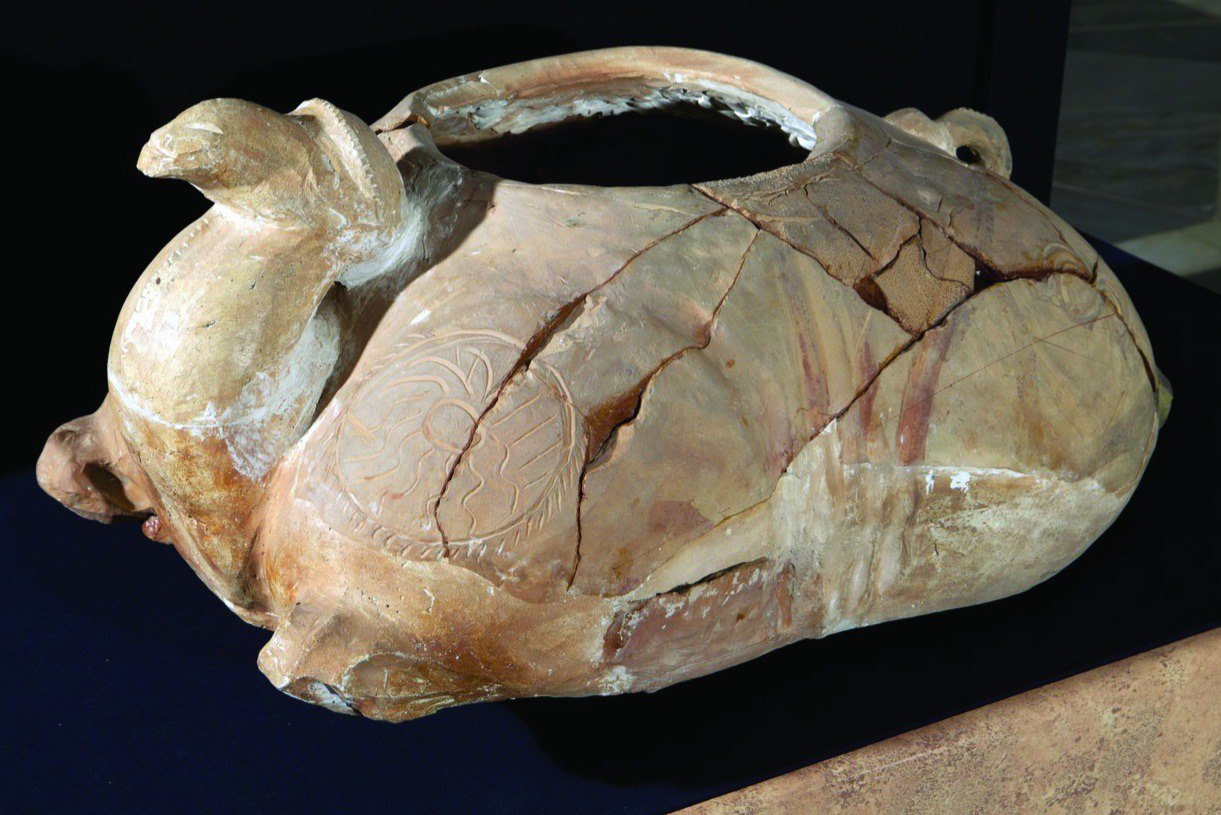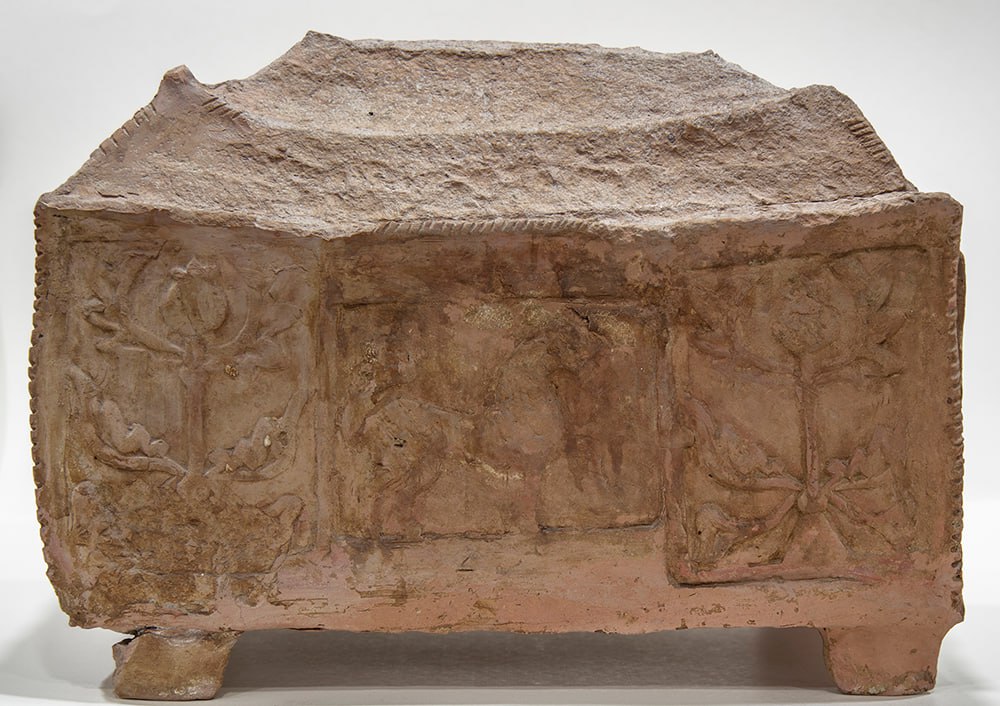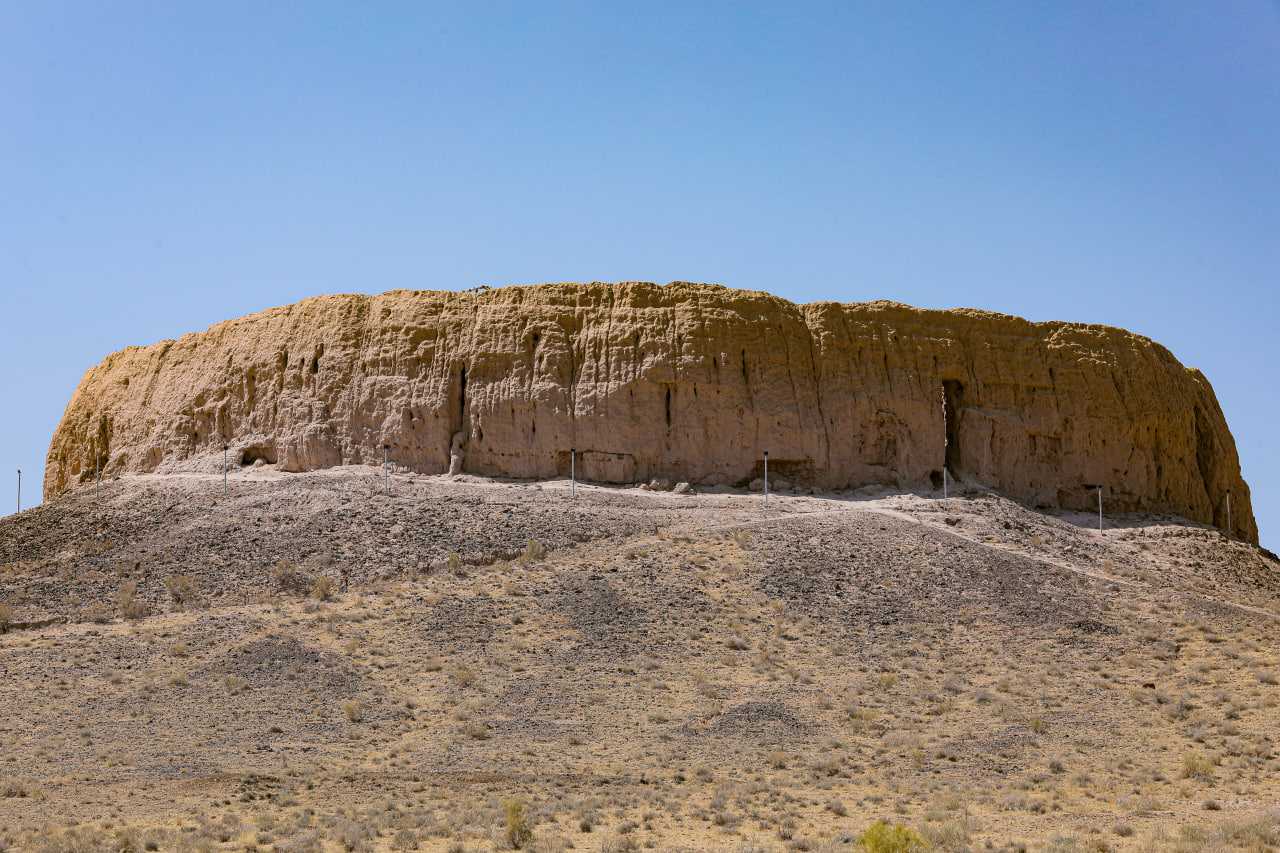 Zoroastrianism, one of the world's oldest religions that emerged around 3000 years ago, has left a profound mark on the history and culture of Uzbekistan. The majestic Khorezm, located at the lower reaches of the Amu Darya River, is recognized as the cradle of the teachings of the prophet Zarathustra (Zoroaster). Zoroastrian traditions, interwoven into the fabric of local life, have shaped the character of this remarkable region for centuries. The ancient sites of Toprak-Kala and Koy-Krylgan-Kala stand as vivid testimonies to the flourishing Zoroastrian culture that once thrived in these lands.
Zoroastrianism, one of the world's oldest religions that emerged around 3000 years ago, has left a profound mark on the history and culture of Uzbekistan. The majestic Khorezm, located at the lower reaches of the Amu Darya River, is recognized as the cradle of the teachings of the prophet Zarathustra (Zoroaster). Zoroastrian traditions, interwoven into the fabric of local life, have shaped the character of this remarkable region for centuries. The ancient sites of Toprak-Kala and Koy-Krylgan-Kala stand as vivid testimonies to the flourishing Zoroastrian culture that once thrived in these lands.
A Dakhma is a circular structure that serves as an essential element in Zoroastrian religious tradition for burial practices. The word "dakhma" translates from Persian as "tower of silence". Along the perimeter of these towers, the deceased are laid out, following ancient customs, becoming sustenance for birds of prey. According to the fundamental beliefs of Zoroastrianism, a "polluting" dead body should not defile the earth, fire, or water through decomposition, thereby allowing the preservation of the sacred elements of nature.
Wind-swept and sun-dried bones were regarded as embodiments of the deceased's soul; they were collected and placed in special ossuaries, which were then buried in the earth or in burial vaults known as naus. The term "ossuary" derives from the Latin word "os," meaning "bone". The numerous ossuaries discovered during excavations by Soviet archaeologists in the territory of ancient Khorezm are vivid evidence of the presence of Zoroastrian beliefs and practices in Uzbekistan.

 For several centuries, the population utilized this unique burial method until it gave way to new traditions with the acceptance of Islam.
For several centuries, the population utilized this unique burial method until it gave way to new traditions with the acceptance of Islam.
Dakhma Shylpyk is one of the greatest mysteries of the architecture of the ancient Khorezm civilization, a fascinating structure that holds traces of long-gone eras. It first attracted the attention of researchers in 1940 when archaeologists, carefully examining the slopes of the hill, discovered fragments of clay ossuaries. These findings became the key to unraveling the purpose of Dakhma Shylpyk, shedding light on its unique history and significance in ancient society.
 Shylpyk is a circular tower that stands 15 meters high and has a diameter of 65 meters, situated atop a natural hill 43 km from Nukus. scientists estimate that its construction dates back to the end of the 1st century BCE to the beginning of the 1st century CE. In the 7th and 8th centuries, with the arrival of the Arabs, the tower underwent modifications, and it was further reconstructed in the 9th to 10th centuries during the flourishing period of Ancient Khorezm.
Shylpyk is a circular tower that stands 15 meters high and has a diameter of 65 meters, situated atop a natural hill 43 km from Nukus. scientists estimate that its construction dates back to the end of the 1st century BCE to the beginning of the 1st century CE. In the 7th and 8th centuries, with the arrival of the Arabs, the tower underwent modifications, and it was further reconstructed in the 9th to 10th centuries during the flourishing period of Ancient Khorezm.
Zoroastrians used Shylpyk for special rituals involving the bodies of the deceased. The remains of the dead were left on top of the tower to be eaten by birds of prey. Later, the bones were collected into clay ossuaries, which were buried in the ground. This method of burial was linked to Zoroastrian philosophy, which forbade the desecration of the earth through the decomposition of corpses. Such a form of burial was practiced by the population for several centuries, until the adoption of Islam. After the Arab conquest of Central Asia and the establishment of Islam in the region, burials according to the Zoroastrian rituals ceased.
Some researchers also propose that Shylpyk served as a signal tower, alongside other fortifications of the Khwarezmshahs' state.
The best time to visit Shylpyk is at dawn when nature awakens and is filled with freshness. From the height of the fortress, a mesmerizing panoramic view unfolds over the surrounding landscape: the Amu Darya River sparkles in the sunlight, reflecting the greenery of the fields and orchards. Nearby lies the Kyzylkum Desert, dotted with patches of reddish shrubs, creating a striking contrast against the emerald vegetation.
 Shylpyk is not just one of the main attractions of Karakalpakstan; it is also a symbol of cultural heritage, immortalized on the state emblem of the republic. Its majestic architecture draws the attention of both locals and travelers from afar, who wish to connect with the rich history and beauty of this remarkable region.
Shylpyk is not just one of the main attractions of Karakalpakstan; it is also a symbol of cultural heritage, immortalized on the state emblem of the republic. Its majestic architecture draws the attention of both locals and travelers from afar, who wish to connect with the rich history and beauty of this remarkable region.
 The clay and stone ossuaries from the Shylpyk towers are carefully preserved in the museums of Nukus and Tashkent, allowing modern generations to touch upon the mysteries of past eras.
The clay and stone ossuaries from the Shylpyk towers are carefully preserved in the museums of Nukus and Tashkent, allowing modern generations to touch upon the mysteries of past eras.